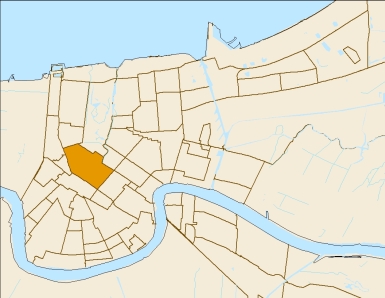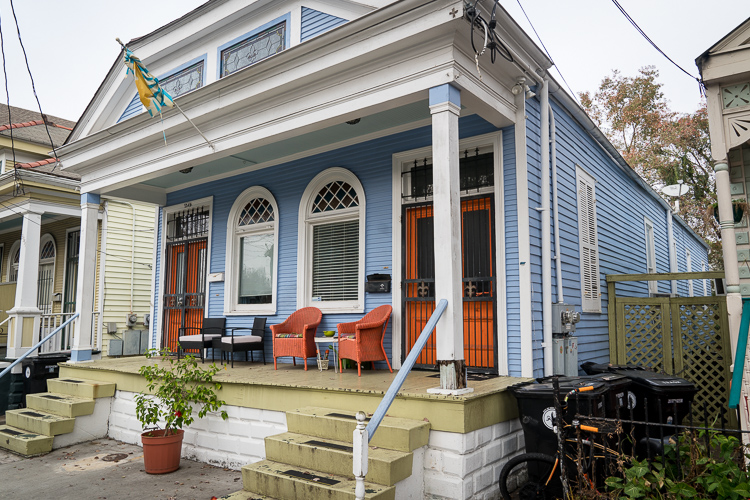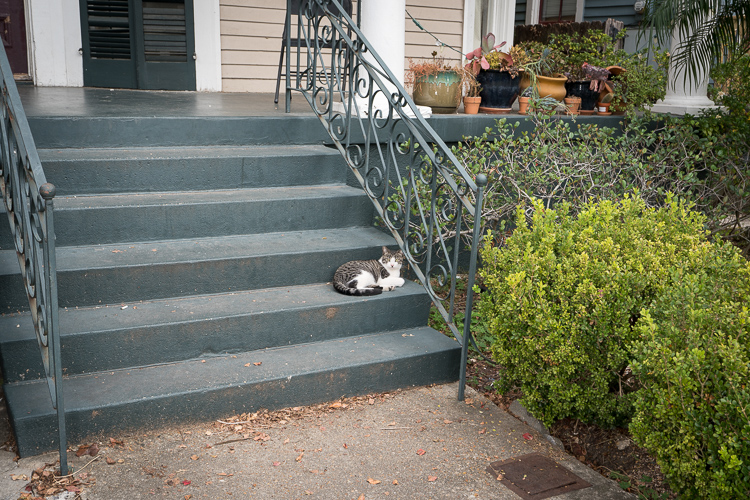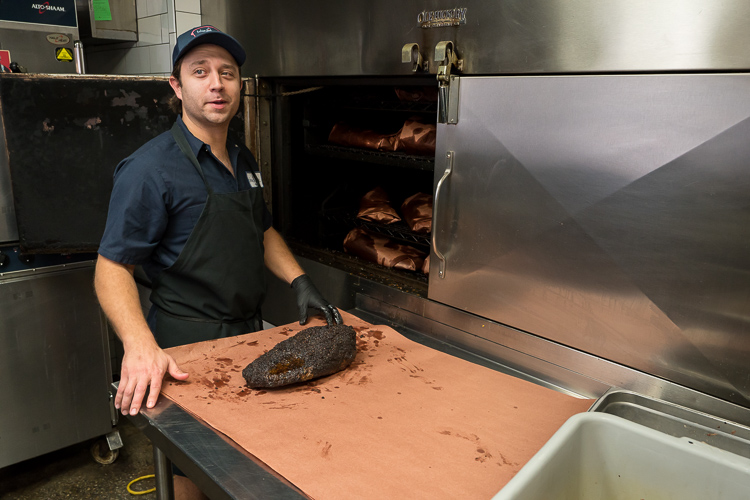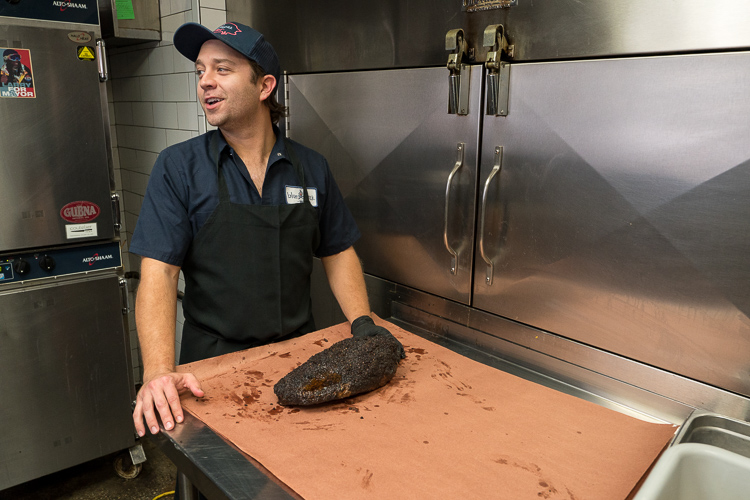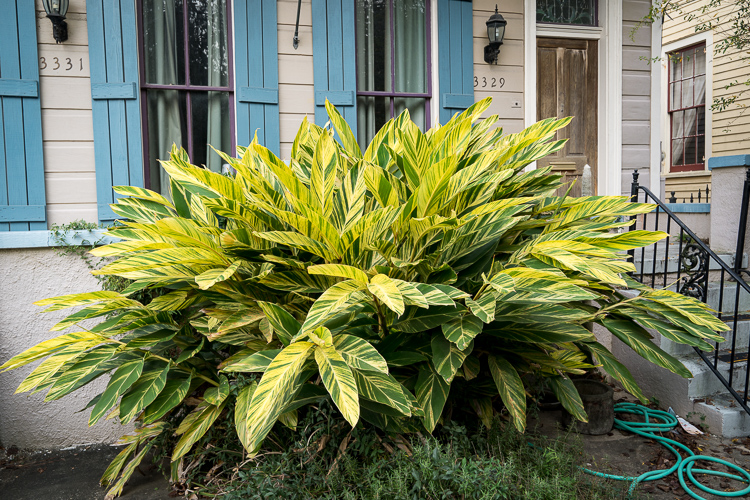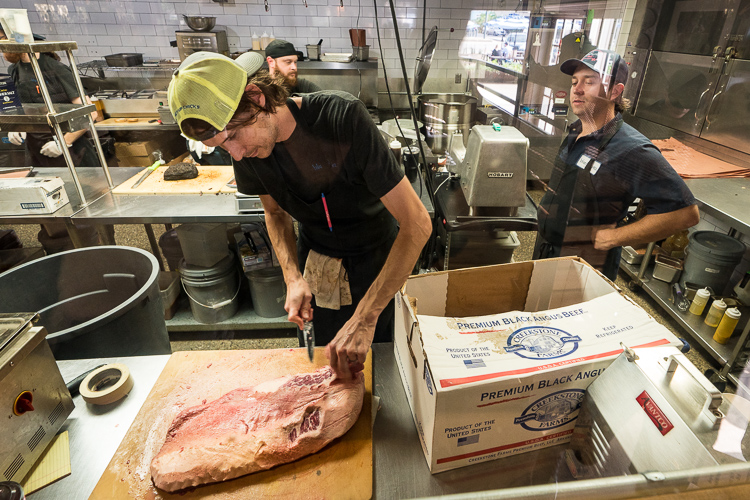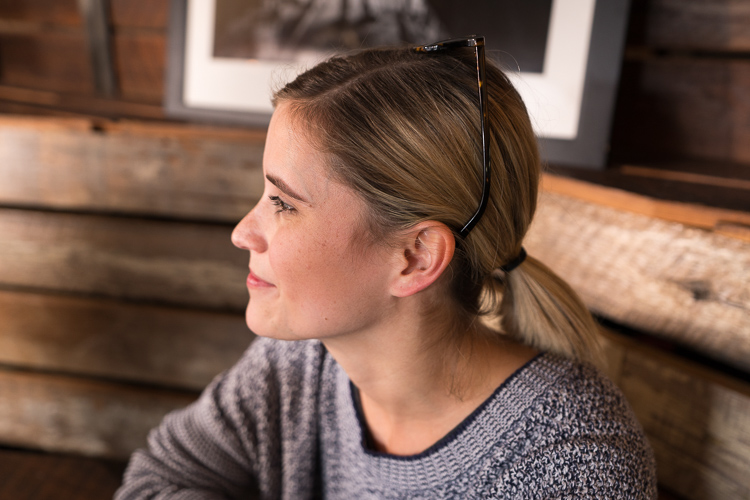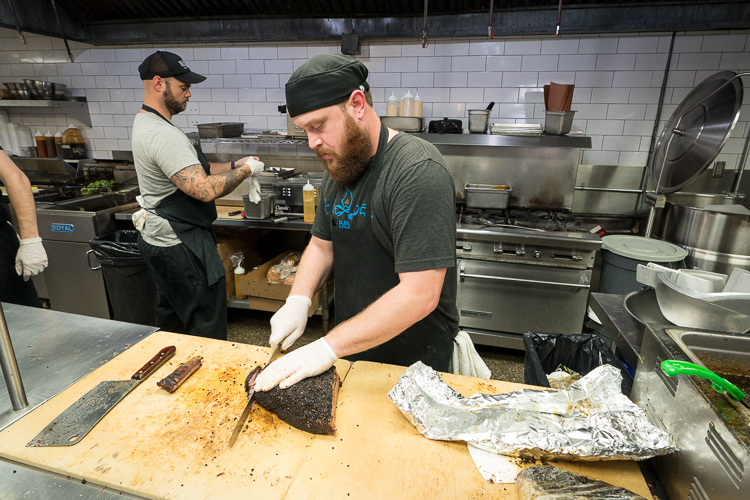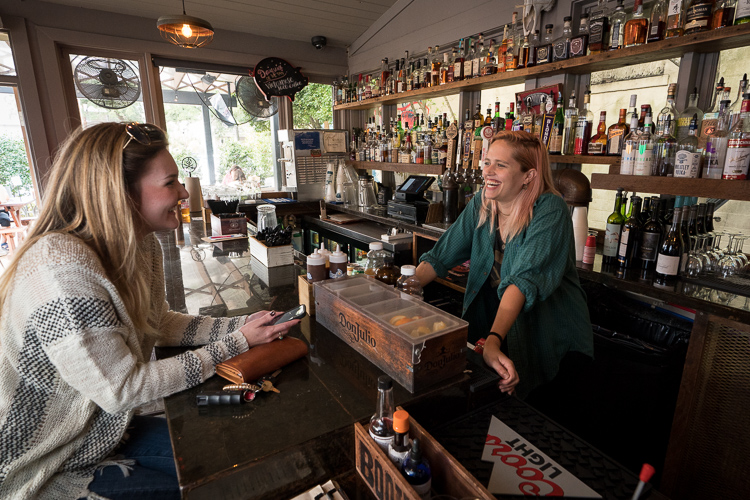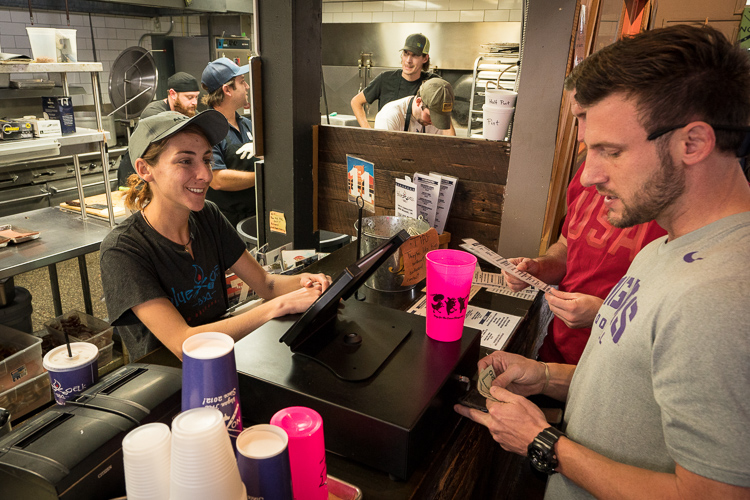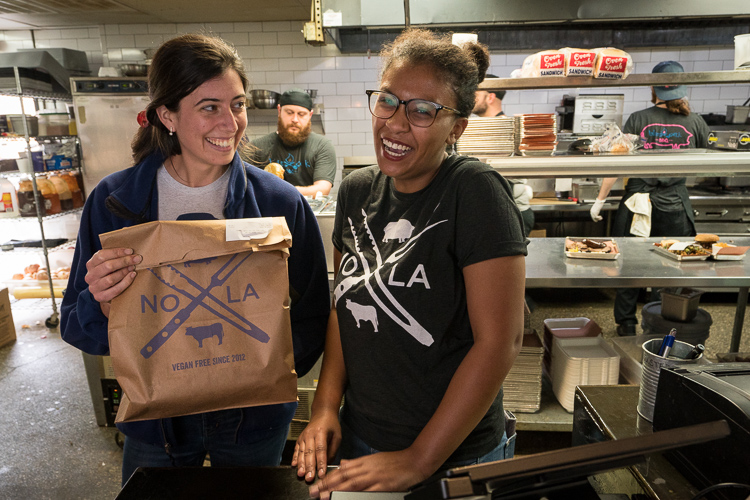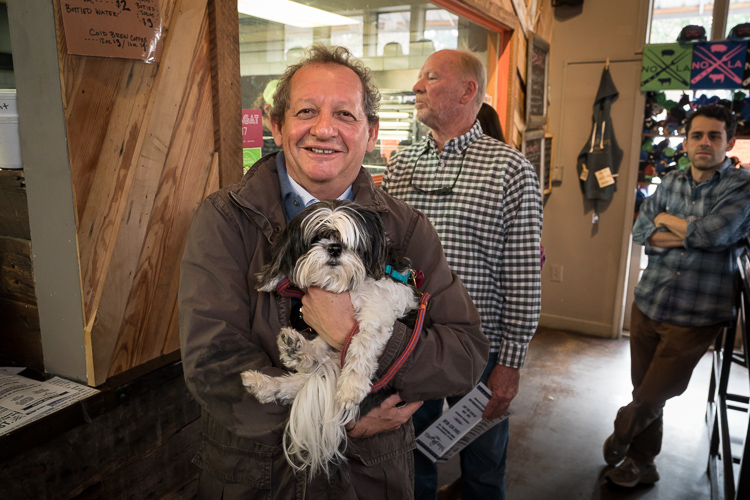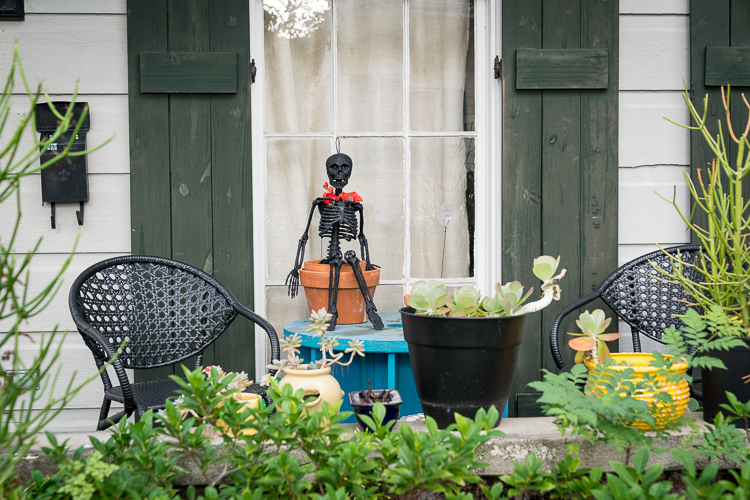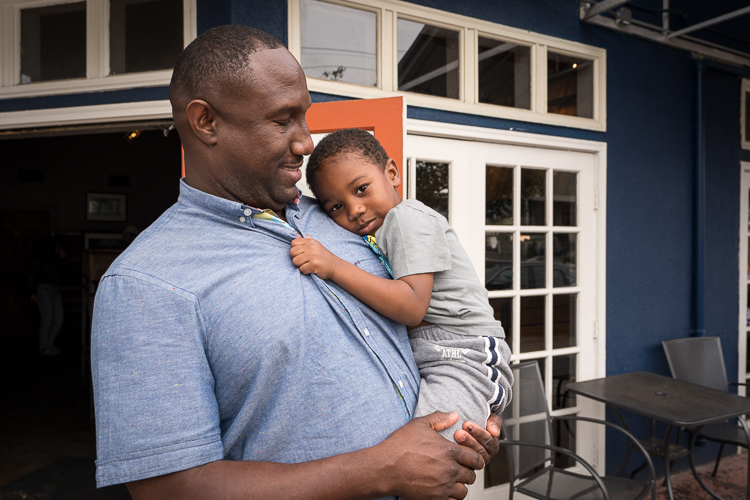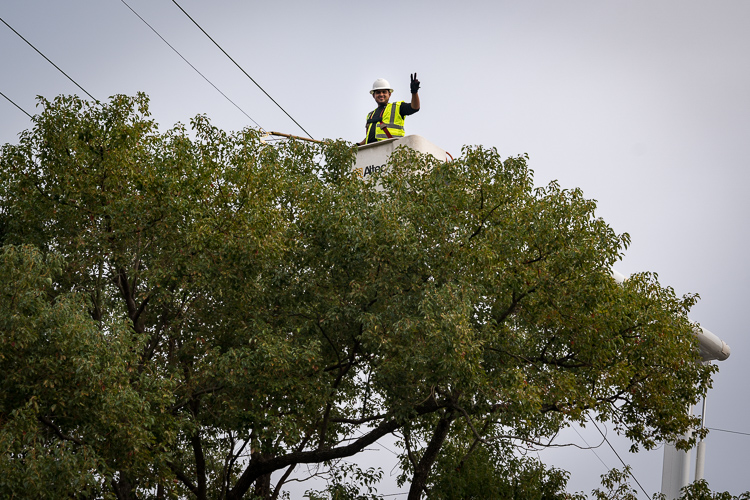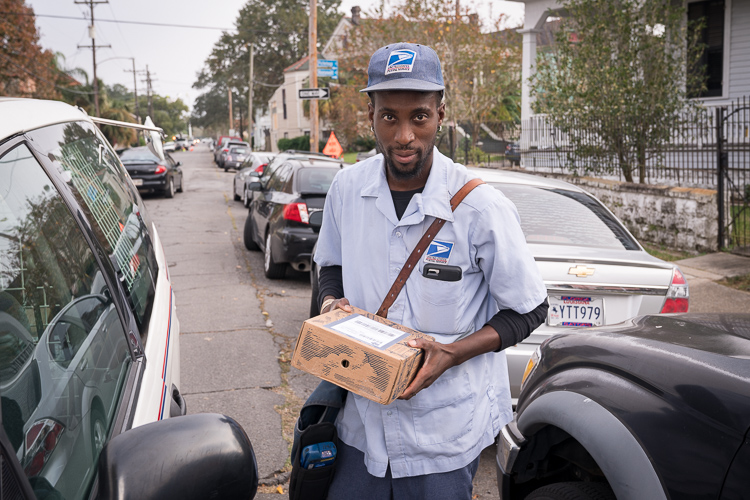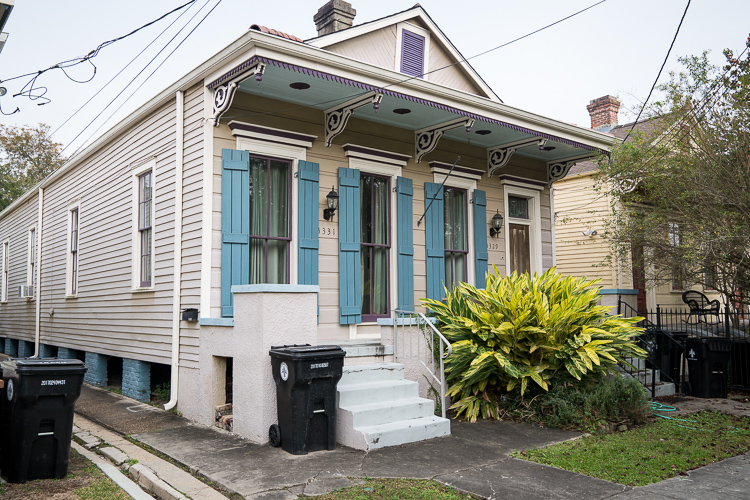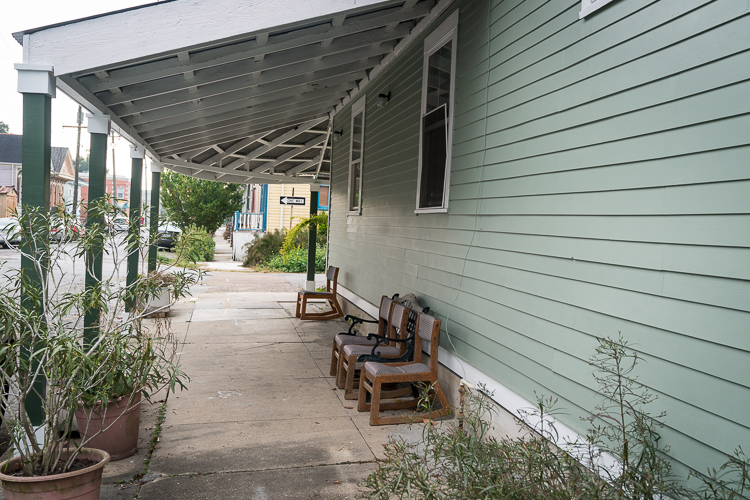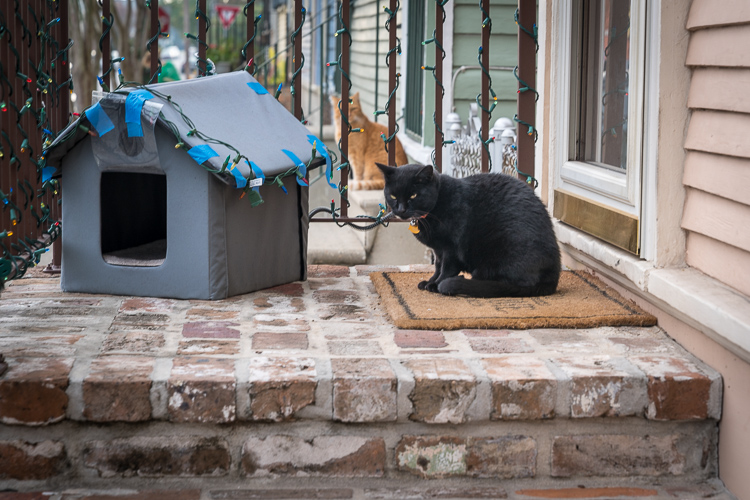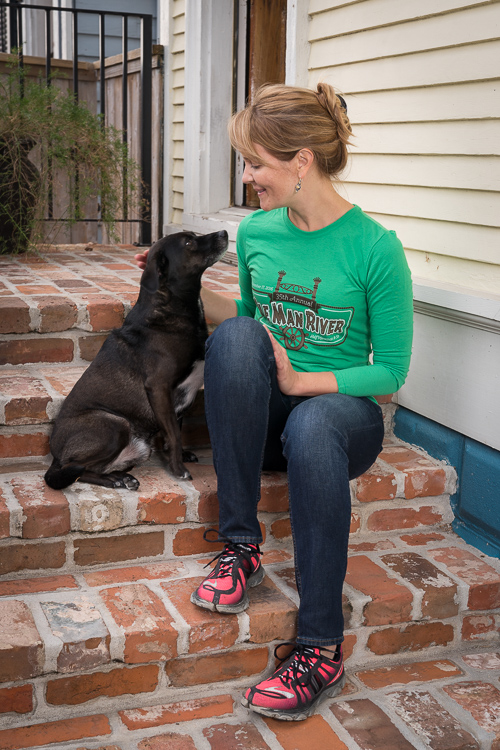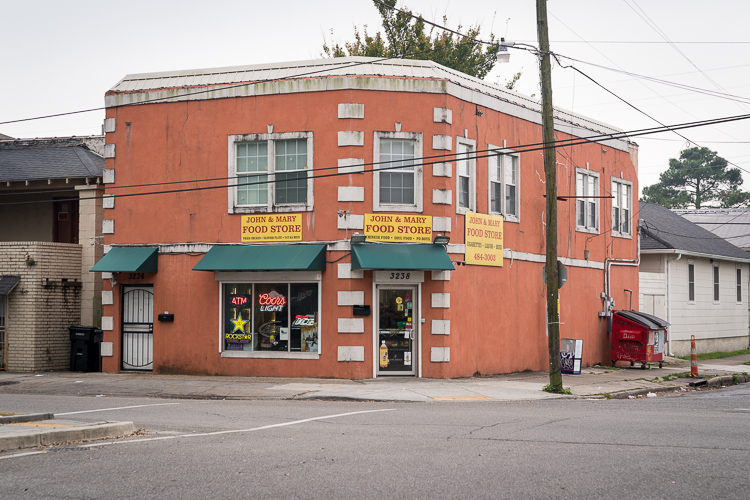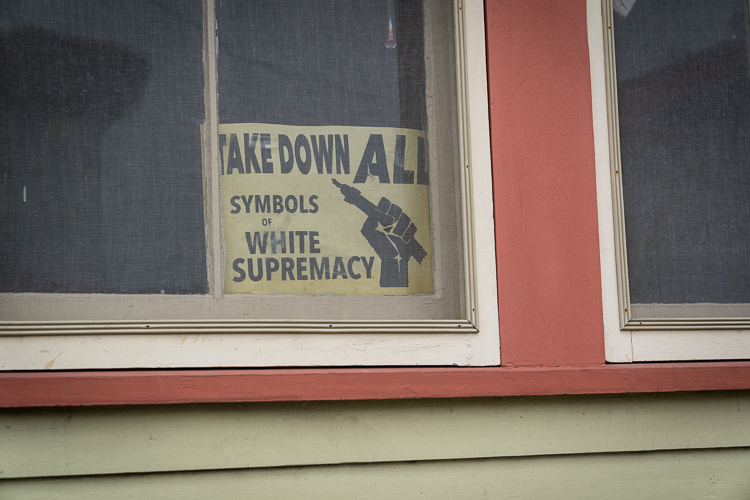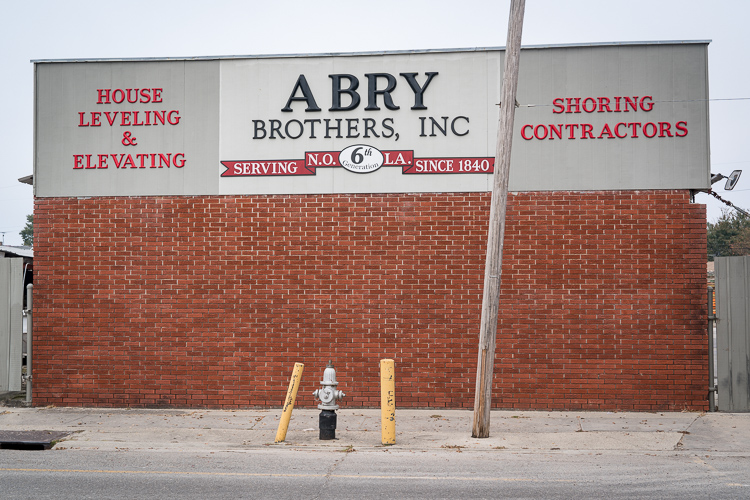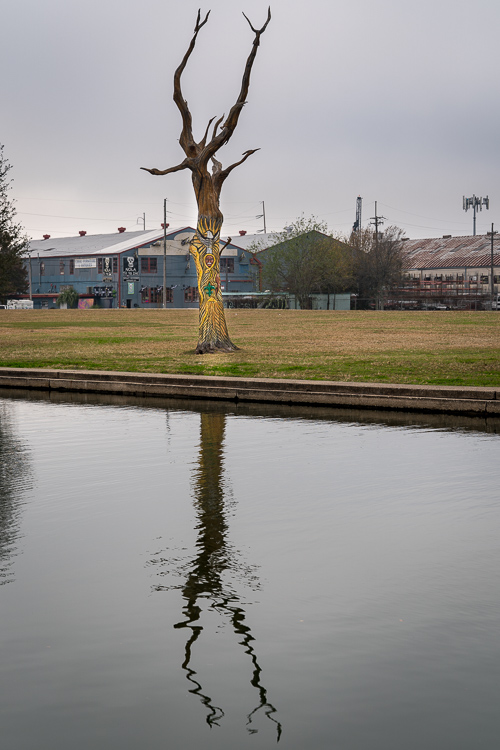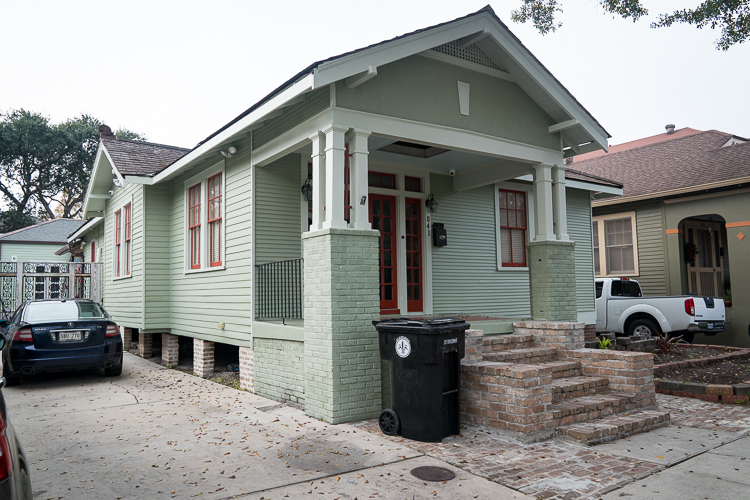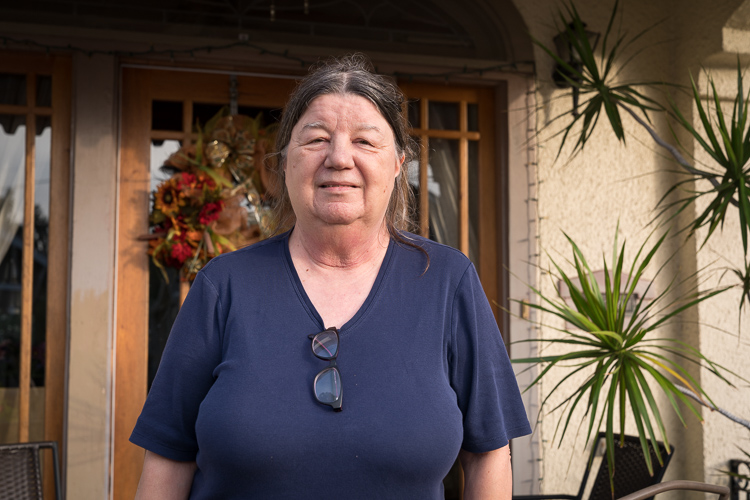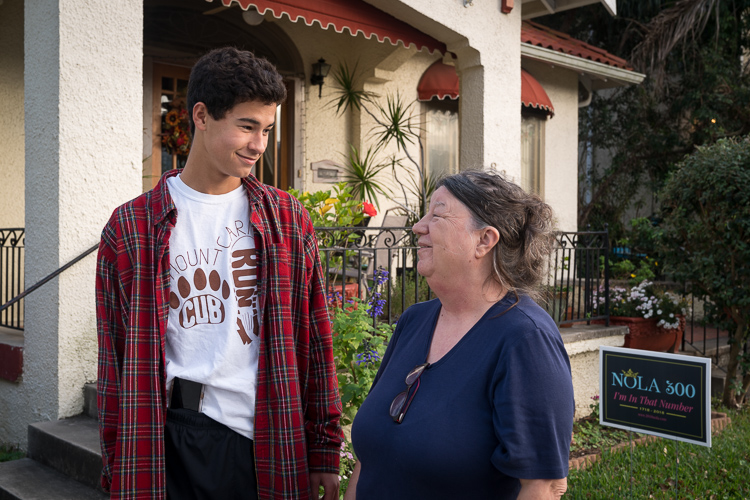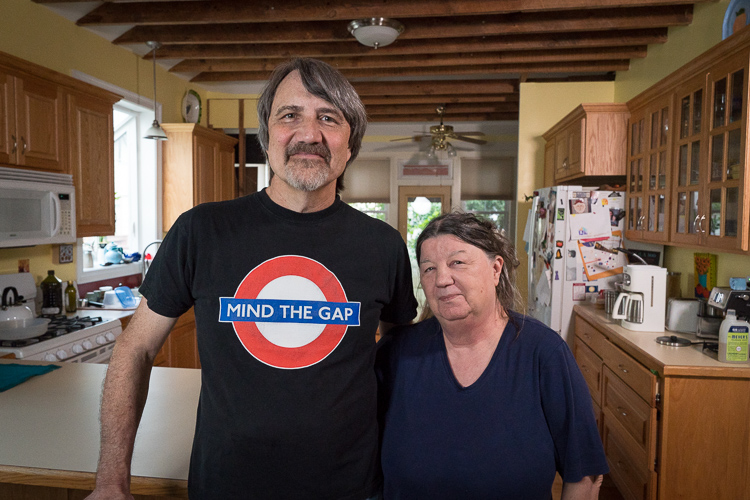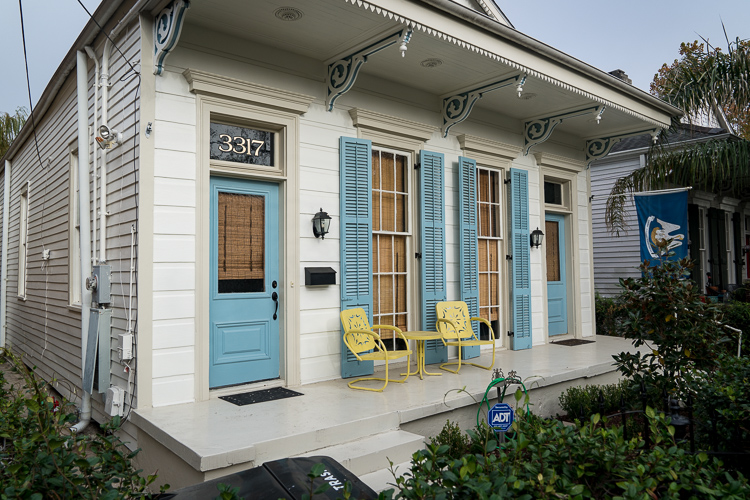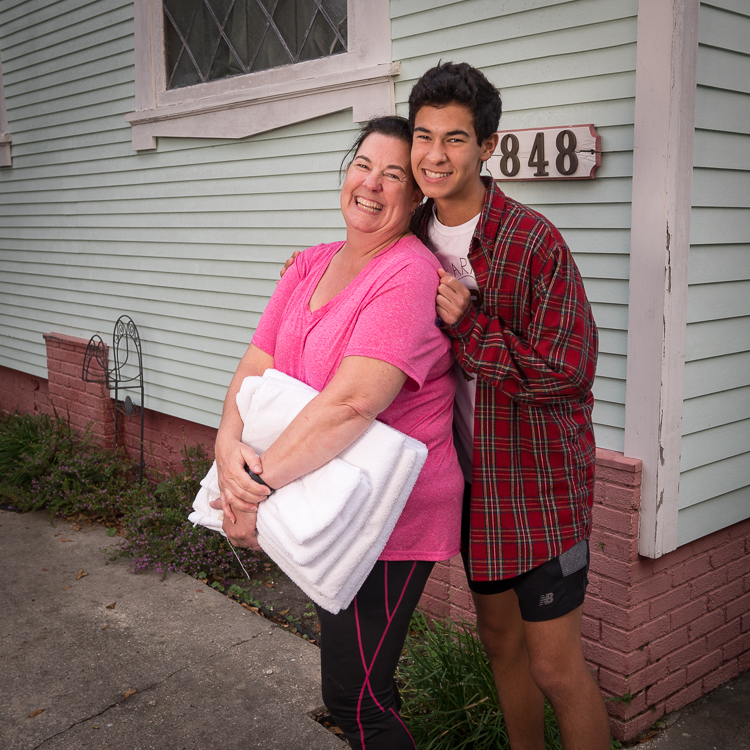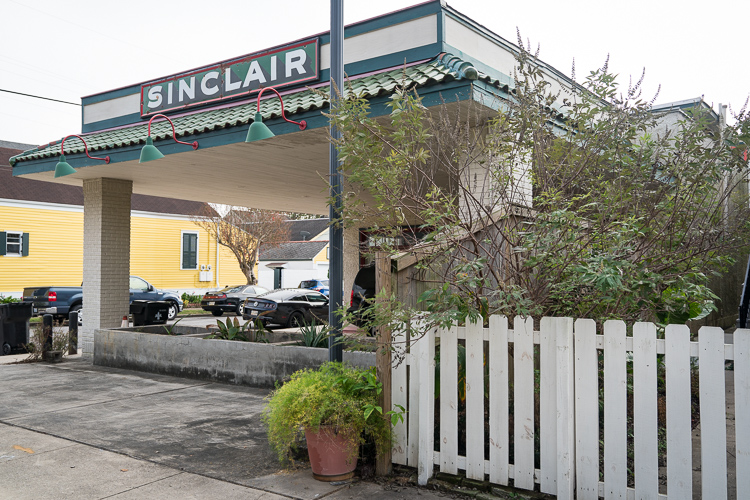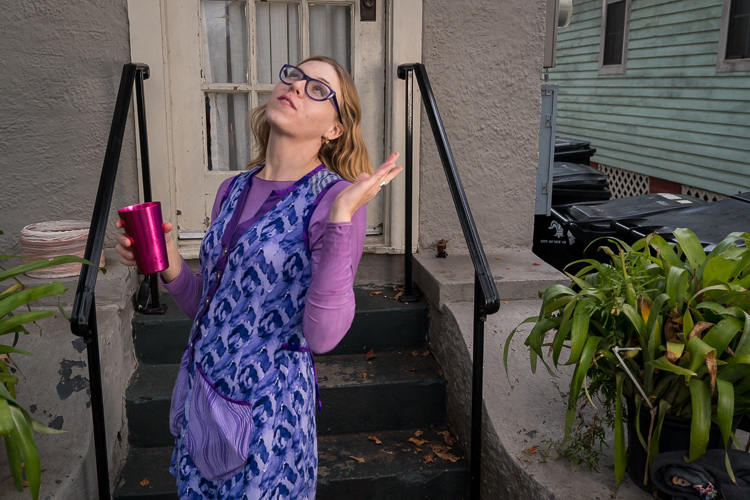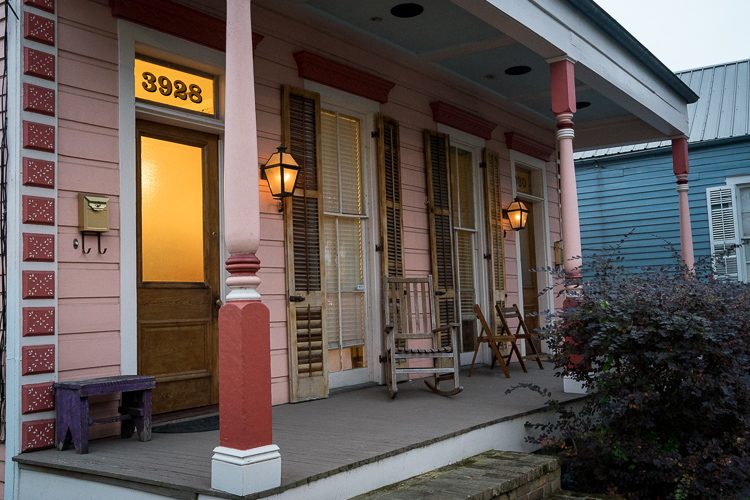Pam: This is my husband Ed Latour.
Pam: Let me tell you what happened, my friend Steven Bingler, who is an architect came through and he said, “just it make a post-Katrina house.” So, we took out every weight-bearing stud, we opened up all the rooms—
Ed: Well, non-weightbearing studs.
Pam: Non-weight bearing studs!
[Laughs]
Pam: So this house was 1924. It was all flooded to the top, so we just tore it out and the people we had working on the house, they scoffed at us and we said, “no, no, no. Just, let’s see what it looks like.” And they called us up and said, “come see because it’s beautiful!”
Ed: We asked them the sand the boards and they were kind of reluctant.
Pam: This was all covered, so we just left this. Come see this, you can see where the water was. So, the water settled here [pointing].
Ed: That’s where it settled. We don’t know if it was higher. The problem was because it was closed up, the mold just went up on the inside the walls and outside the walls.
Pam: Like I said, we stood in privilege in the storm. So, these were all rooms. We just opened it all up.
Ed: We had a wall splitting a front room. We had another wall here, between the dining room and the kitchen.
Q: So, you were able to save your vinyl collection? Because I see—
Pam: Oh, no. No.
Q: So, you had to replace all that?
Ed: Well, you know it’s the sleeves. I saved some of the vinyl because I was afraid I couldn’t replace them, but the sleeves—that’s kind of the best part of them.
Pam: Was one of his worst days. I have a photograph of him sitting on the porch deciding—he had an incredible vinyl collection.
Ed: I lost about 500 albums.
Q: Oh, sorry. I know how you feel.
Ed: It’s all right.
[Laughs]
Ed: And the thing is, when we intentionally evacuate I pick all those up and put them up on the counter, but that weekend we weren’t evacuating. We were just leaving town because the storm was going somewhere else. By the time were already gone it was heading right here and we didn’t do anything to prepare.
Pam: The other really hard part this was, like any academic, I had 3000 books in this house.
Ed: And that was just mounds of mush.
Pam: And I couldn’t carry them out, so friends carried them out and put them on the curb. That’s the thing we have not replaced here, intentionally. If it floods I don’t want to do that again.
Q: The flood that happen in August— Did you get water here?
Pam: We got it up to the first step.
Ed: It’s the highest we’ve ever seen and here. I mean, other than Katrina, but that was a different cause, but this was rainfall. It’s the highest we’ve seen it. We weren’t here for the May ‘95 floods, so I don’t know how high it got then.
Pam: But the neighbors were out. The neighbors were all out. We were all watching, people’s cars were stalled, but we knew it was different. We knew something was different because the rain came so fast and the pumps didn’t turn on, and so I came in here and started picking stuff up. Ed said, “no, no, no.”
Ed: Rainfall is not going to make it that high here. I mean, we’re raised. If we were on a slab it’d be a different story. |
